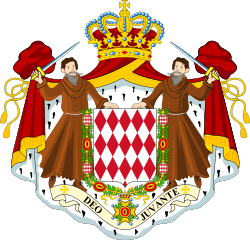Crown Council of Monaco
 |
| This article is part of a series on the politics and government of Monaco |
The Crown Council of Monaco is a seven-member administrative body which meets at least twice annually to advise the Prince of Monaco on various domestic and international affairs. It is one of three such councils designated by the Principality's Constitution, the other two being the National Council and the Communal Council.
Membership
There are seven total members of the Crown Council. The Prince appoints the council's President and three other members; the final three members are chosen amongst candidates put forward by the National Council.
Affairs
Though the Crown Council is simply an advisory committee and has no legislative power, the Prince must consult it before signing international treaties, dissolving the National Council, naturalizing citizens, or making certain other executive decisions.
At the end of March 2005, the Crown Council carried out what may have been one of its most far-reaching acts. Prince Rainier III, the Sovereign since 1949, had for some weeks been seriously ill in hospital in Monaco and the Crown Council established that Rainier was temporarily incapable of ruling. (During the period of Rainier III's incapacity, his doctors in Monaco were agreed that his ill health showed little signs of improving and, agreeing with eminent Parisian doctors who were called to give their independent opinions.)
Then-Hereditary Prince Albert was informed of the Crown Council's incapacity finding regarding Rainier III and, following the Constitution of Monaco, was duly called upon to rule over Monaco as Regent.
The Crown Council noted, nevertheless, that if the health of Rainier III were to improve sufficiently, he would be in a position to re-assume his functions as ruler.
Prince Albert's Regency lasted but a few days into April 2005, when Rainier III died at the age of 82. He was then formally succeeded as Monaco's sovereign by Albert in his own right as Prince Albert II.
External links
- The Crown Council as described by the Government of Monaco's official website
- http://www.palais.mc/wwwpal.nsf/(NewsActu)/e639ecc20b27cd8bc1256fd5005c5427?OpenDocument The Crown Council's finding of Prince Rainier's incapacity (in French)
